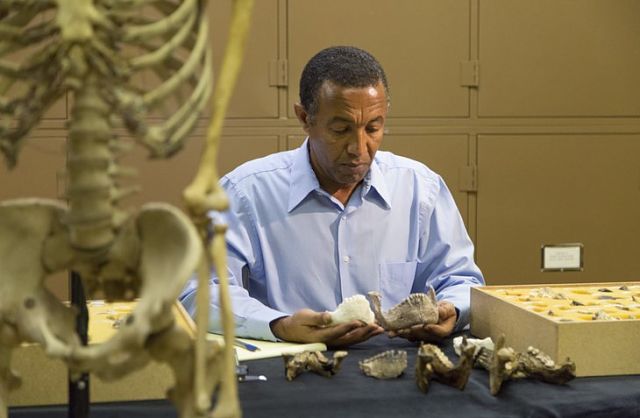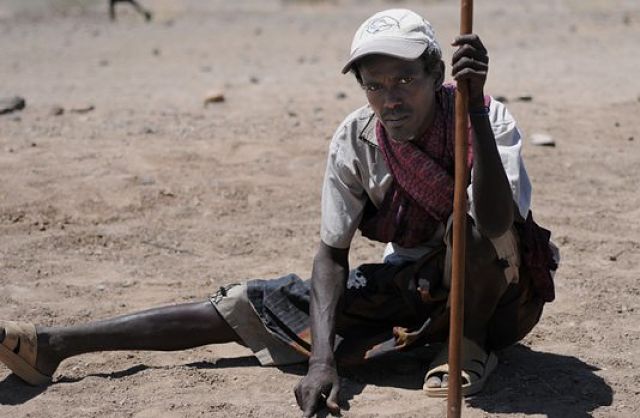 Dr. Yohannes Haile-Selasie conducts comparative analysis of the new fossil from Ethiopia in his laboratory at the Cleveland Museum of Natural History. (Photo: Cleveland Museum of Natural History via AP)
Dr. Yohannes Haile-Selasie conducts comparative analysis of the new fossil from Ethiopia in his laboratory at the Cleveland Museum of Natural History. (Photo: Cleveland Museum of Natural History via AP)
Associated Press
In a paper released Wednesday, May 27, 2015, by the journal Nature, Dr. Yohannes Haile-Selasie and colleagues announce the new find
NEW YORK — A fossil find adds another twig to the human evolutionary tree, giving further evidence that the well-known “Lucy” species had company in what is now Ethiopia, a new study says.
A lower jaw, plus jaw fragments and teeth, dated at 3.3 million to 3.5 million years old, were found in the Afar region of northern Ethiopia four years ago.
That shows a second human ancestor lived in about the same area and time frame as Lucy’s species, researchers said. But not everyone agrees.
In a paper released Wednesday by the journal Nature, the researchers announce the new find and assign it to a species they dubbed Australopithecus deyiremeda (aw-strah-low-PIH’-thuh-kus day-eh-REH’-meh-dah). In the Afar language the second name means “close relative,” referring to its apparent relationship to later members of the evolutionary tree.
But nobody knows just how it’s related to our own branch of the family tree, said Yohannes Haile-Selassie of the Cleveland Museum of Natural History, who led the discovery team.
Our branch, which includes Homo sapiens and our closest extinct relatives, arose from the evolutionary grouping that now includes the new creature as well as Lucy’s species. The new arrival, and the possibility of still more to come, complicates the question of which species led to our branch, he said.
Previously, fossilized foot bones found in 2009 near the new discovery site had indicated the presence of a second species. But those bones were not assigned to any species, and it’s not clear whether they belong to the newly identified species either, Haile-Selassie said. If they don’t, that would indicate yet another species from the same time and region as Lucy’s species, Australopithecus afarensis.

An undated photo provided by the Cleveland Museum of Natural History shows Mahammed Baroa, a local Afar working for the Woranso-Mille project, who found the fossils. (AP photo)
Bernard Wood of George Washington University, who didn’t participate in the new work, said the discovery provides “compelling evidence” that a second creature lived in the vicinity of Lucy’s species at the same time. The next question, he said, is how they shared the landscape.
“These fossils certainly create an agenda for a lot of interesting research that’s going to be done in the next decade,” Wood said.
As evidence that the new fossils represent a previously unknown species, the researchers cite specific anatomical differences with known fossils. But Tim White, a University of California, Berkeley, expert in human evolution, was unimpressed.
He said he thinks the fossils actually come from Lucy’s species.
“Anatomical variation within a biological species is normal,” he said in an email. “That’s why so many announcements of this sort are quickly overturned.”
—
Related:
‘New species’ of ancient human found (BBC)
Forty Years After Lucy’s Ethiopia Discovery: A Conversation with Donald Johanson (TADIAS)
Join the conversation on Twitter and Facebook.

























